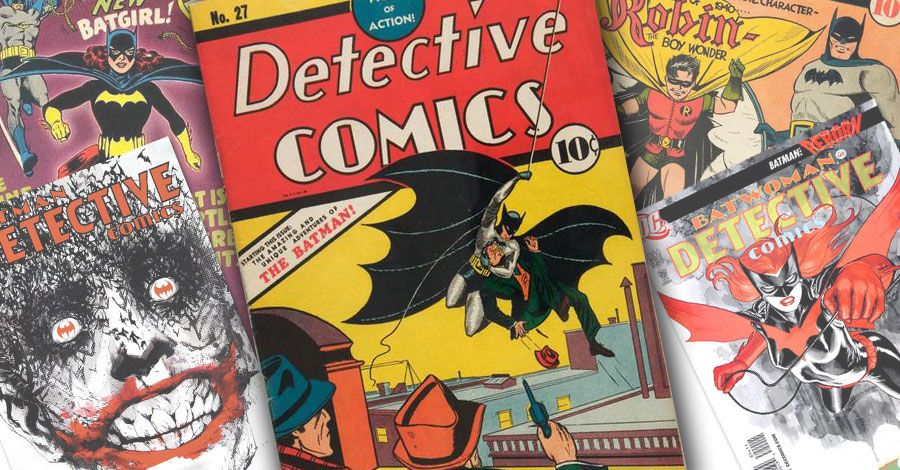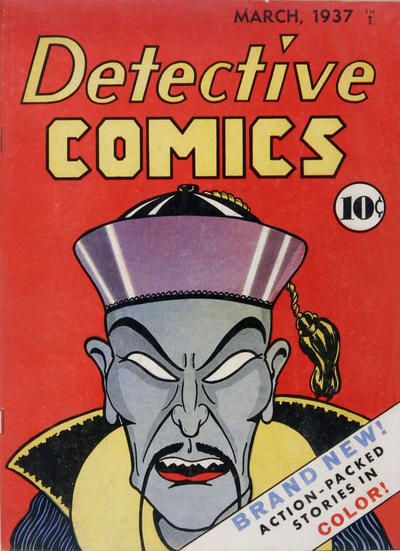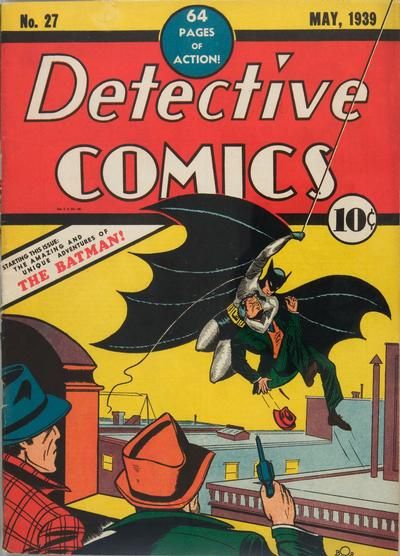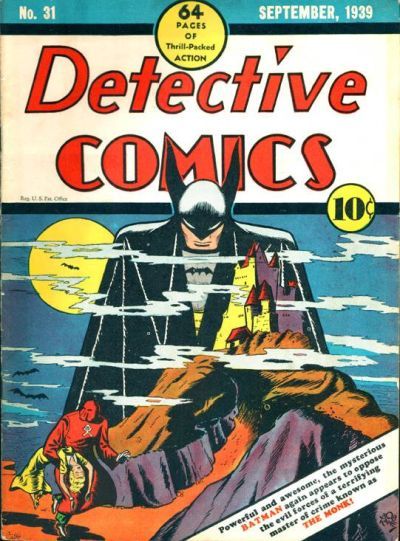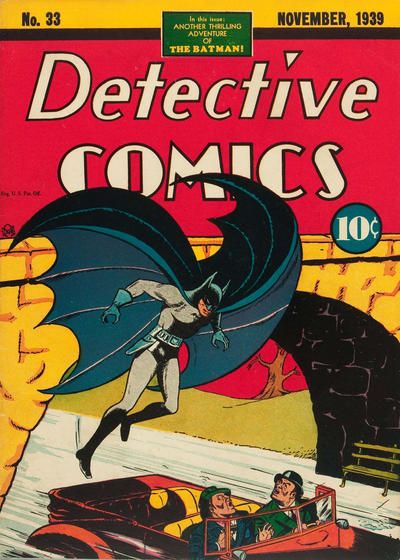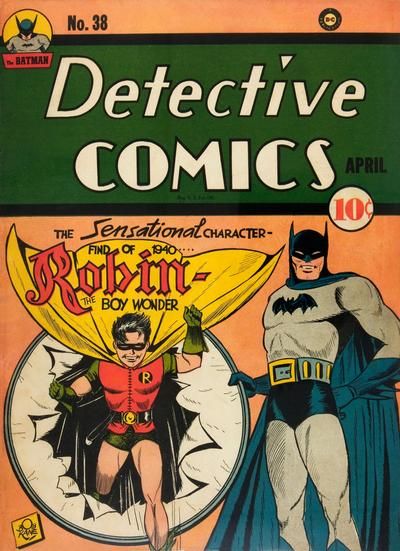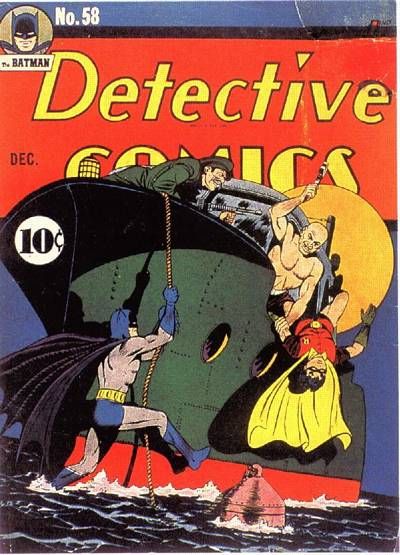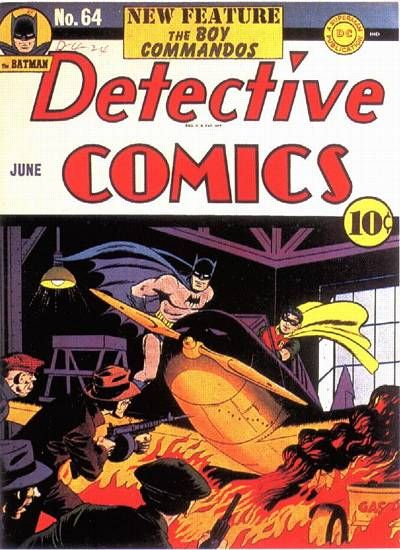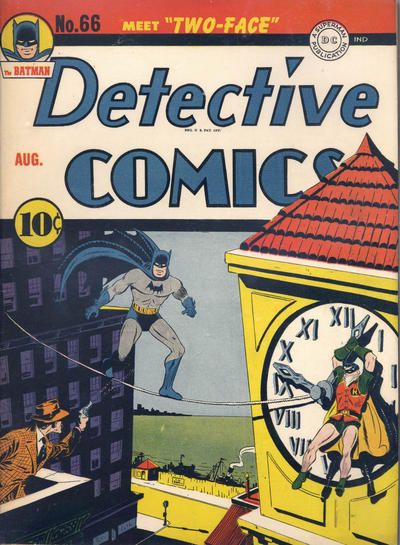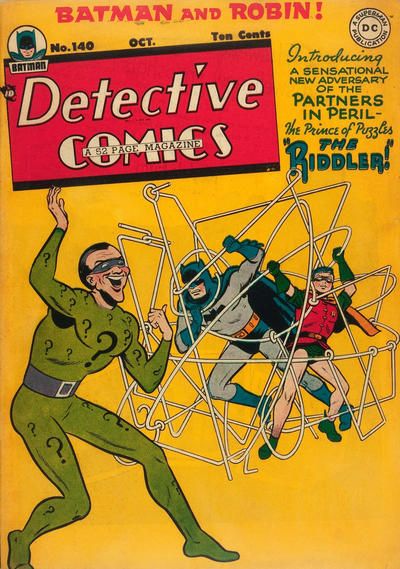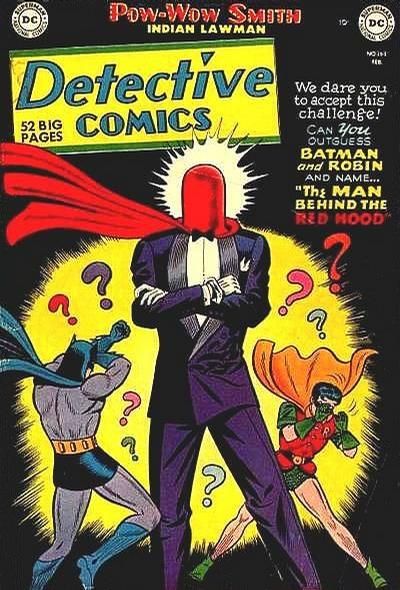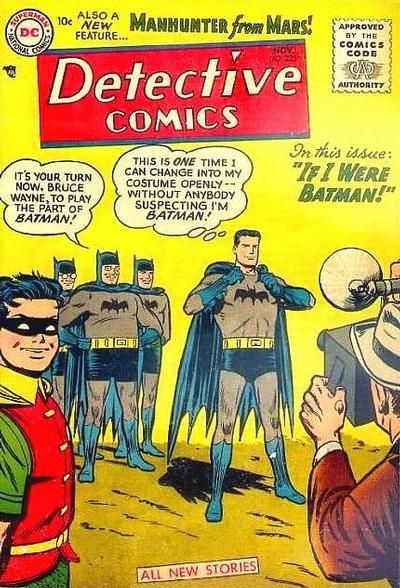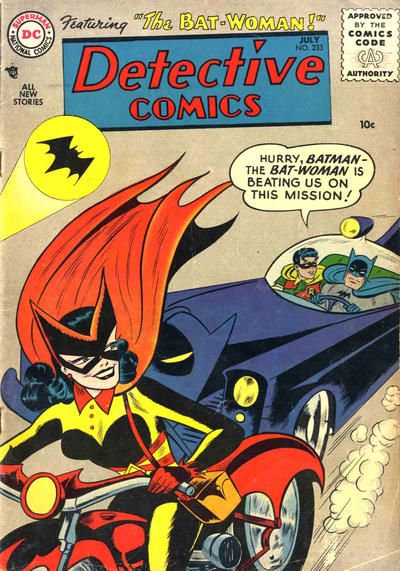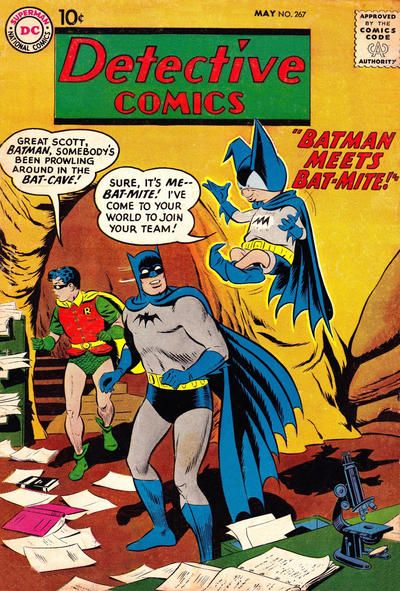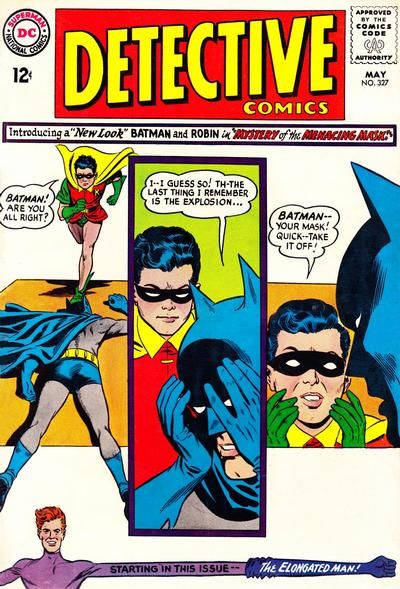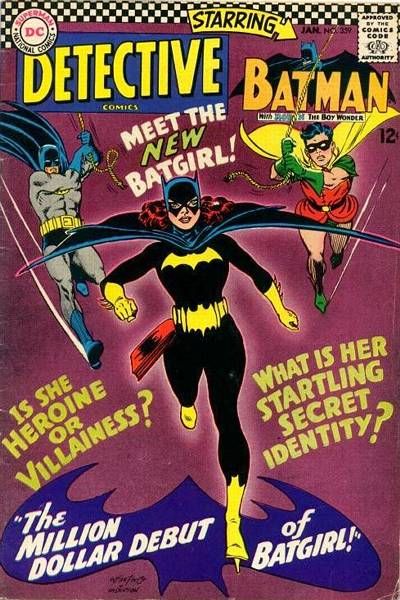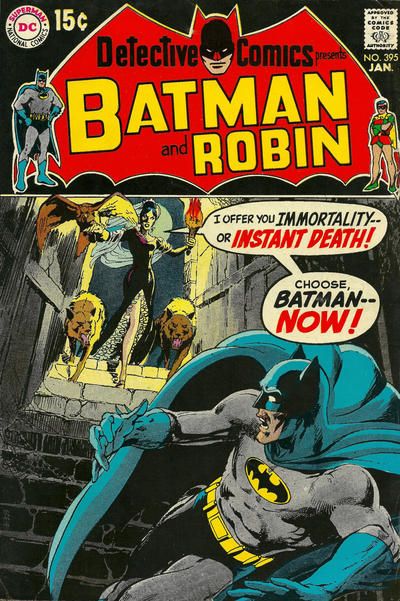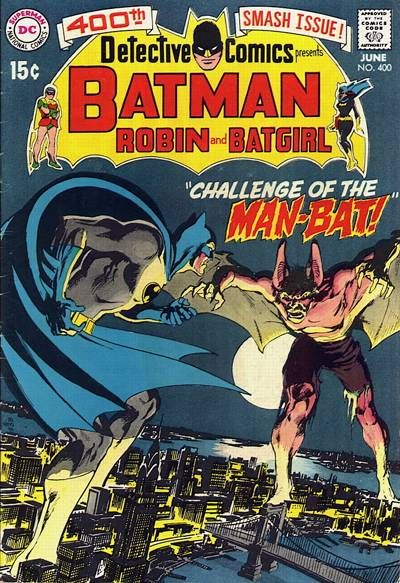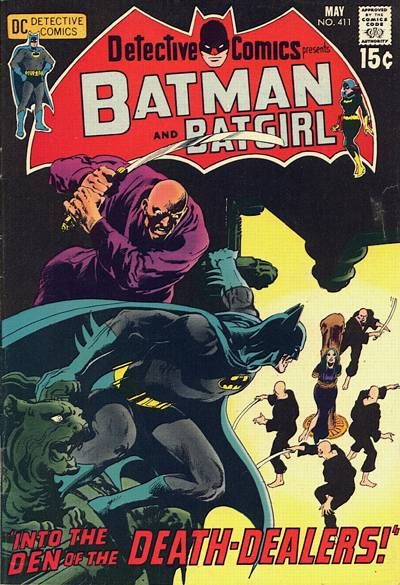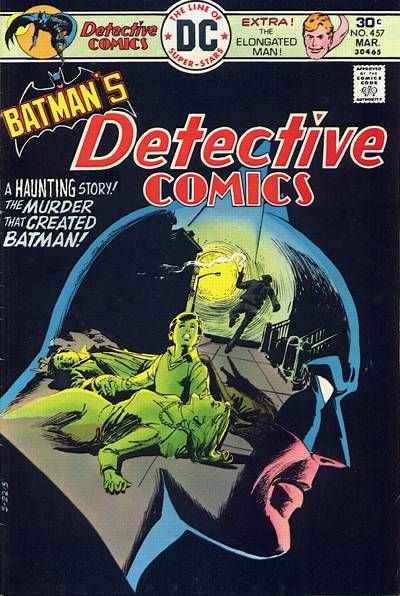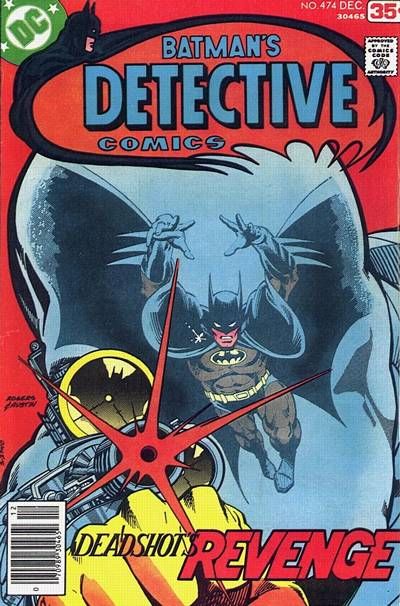"Detective Comics" #1 debuted in March 1937, giving the company that would become DC Comics its name, and introducing Batman to the world in Issue #27. It remained in continuous publication until September 2011 when DC relaunched it for the first time as part of the New 52.
With the release of "Detective Comics" #934, DC Comics reinstated the long running series' classic numbering. In addition to positioning the title within arm's reach of #1000, this move once again connected the new Rebirth era to the earliest days of DC's history. To mark this occasion, CBR has narrowed down the 25 most important issues of "Detective Comics" ever published, presented chronologically -- even we're not crazy enough to attempt to rank them!
RELATED: DC's New Batman Family - Meet the Main Players of "Detective Comics"
25 "Detective Comics" #1
Released over two years before Batman's debut, this issue (marred by its grotesquely racist cover) introduced several characters, including a private detective named Slam Bradley who was created by two young men named Jerry Siegel and Joe Shuster, the men best known for introducing Superman to the world. But it is best known today for being the issue that led to Major Malcolm Wheeler-Nicholson having to sell part of his comic book company to Harry Donenfeld, a distributor and printing plant owner, in order to get "Detective Comics" #1 published. Donenfeld and his accountant, Jack Liebowitz, soon took over the entire company from the financially struggling Wheeler-Nicholson and turned it into the comic book empire now known as DC Comics -- first known as National Comics, but eventually re-named in honor of the comic that started it all.
24 "Detective Comics" #27
Bob Kane and Bill Finger changed the comic book world by introducing readers to the famous crime fighter known as Commissioner James Gordon -- not to mention Gordon's young socialite friend, Bruce Wayne, who often goes out at night dressed as a bat. Seriously, though, this is not just the most important issue of "Detective Comics," but one of the most important issues of any comic ever published. Batman's first appearance is probably the most expensive comic of all-time -- two comics have sold for more, but they were both in better condition than the best condition copy of "Detective Comics" #27 sold so far.
23 "Detective Comics" #31
Gardner Fox wrote this issue, drawn by Bob Kane and Sheldon Moldoff, which introduced the Monk, the first costumed villain Batman ever faced. The issue also introduced the Batplane and the Batarang. The cover by Kane is one of the all-time best Batman covers.
22 "Detective Comics" #33
One of the most interesting "behind-the-scenes" comic book mysteries is who, exactly, wrote the two-page story at the start of this issue, which tells the origin of Batman, one of the greatest origins in the history of comic books. Was it Gardner Fox, who wrote the main story? Or was it Bill Finger, who co-created Batman with the artist of this issue, Bob Kane (assisted in this issue by Sheldon Moldoff)? Whoever wrote it, it is a historic origin, depicting the death of Thomas and Martha Wayne for the first time.
21 "Detective Comics" #38
This issue, by Bill Finger, Bob Kane, Jerry Robinson and George Roussos, gave readers the "sensational character find of 1940" -- Robin the Boy Wonder, Batman's partner in crime-fighting and the most famous superhero sidekick, ever. Dick Grayson later became a superhero in his own right, Nightwing, and even filled in as Batman for a couple of years. He continued as the lead character in "Detective Comics" in the year-plus leading up to the 2011 launch of DC's New 52, even after Bruce Wayne had returned as Batman in other "Batman" titles!
20 "Detective Comics" #58
Inspired by the advertising mascot for a cigarette company, the Penguin made his debut in this 1941 comic book by Bob Kane, Bill Finger, Jerry Robinson and George Roussos. An interesting facet about "Detective Comics" during this time period was that villains almost never appeared on the cover in their first appearance. They sort of had to "earn" that right. Penguin wouldn't appear on a cover for a number of months, though his trick umbrellas were present right from the start of things.
19 "Detective Comics" #64
This one might be a bit controversial, as it has nothing to do with Batman, and its importance has certainly diminished over the years as very few people even know who the Boy Commandos are anymore. But in 1942, they were such a huge part of the comic book scene that we couldn't pass up spotlighting their first appearance.
You see, Joe Simon and Jack Kirby had created "Captain America" for Timely Comics (now Marvel), and after they felt they were not being paid what was promised to them in terms of profit shares on Cap, they became free agents. DC Comics was happy to let the duo do whatever they wanted, and paid them handsomely. After revamping a few superheroes, they then decided to do a book that mixed "kid gang" stories (like the popular "Dead End Kids" films of the time) with commando stories, and thus, the Boy Commandos were born.
"Detective Comics" #65 actually features a Jack Kirby cover with Batman welcoming the boys to DC, but for some reason, that appeared an issue after they made their debut! Boy Commandos soon got their own title and was DC's third highest-selling book at the time, selling over a million copies a month. Soon, though, both Simon and Kirby were drafted into military service. The book suffered from their absence, and the eventual end of the war killed much of the interest in the series. It ended in 1949.
18 "Detective Comics" #66
This issue not only debuted the great Batman villain, Two-Face, the story by Bill Finger, Bob Kane, Jerry Robinson and George Roussos also gave us one of the great supervillain origins of all-time. Hotshot District Attorney Harvey Kent is prosecuting a mob boss when the criminal throws acid in his face, badly scarring half of Kent's face. It drives Kent insane, and he becomes the villainous Two-Face, obsessed with the number two and flipping a scarred coin to decide whether to do good or evil. It was such a graphic origin that it had to be altered during the Silver Age after the Comics Code was introduced.
17 "Detective Comics" #140
By the end of the 1940s, Bob Kane and Jerry Robinson had both left the "Batman" comics, leaving Bill Finger working with a new group of artists, most famously Dick Sprang, who penciled this issue, featuring the debut of the Riddler (Charles Paris inked the book). The Riddler was a minor character for years, but was brought back into the "Batman" titles just in time for the "Batman" TV series to make the character one of Batman's more famous villains. He's appeared steadily ever since.
16 "Detective Comics" #168
In this classic issue by Bill Finger, Lew Schwartz and George Roussos, the Red Hood is introduced and we see the Joker's origin for the first time. This is basically the origin Alan Moore and Brian Bolland followed in "The Killing Joke," although it has always been offered up as more of a "possible" origin for the Joker than anything. The Red Hood became a bigger deal when former Robin Jason Todd returned from the dead and took on the name for himself.
15 "Detective Comics" #225
This is another one of those issues on our list for something unrelated to Batman. In a backup story, "The Strange Experiment of Dr. Erdel," Joe Samachson and Joe Certa introduce us to a mysterious alien from Mars known as J'onn J'onzz, who decides to go by the name John Jones now that he is stuck on Earth. Initially taking on the persona of a police detective, J'onnz eventually becomes the superhero known as the Martian Manhunter.
14 "Detective Comics" #233
Edmond Hamilton, Sheldon Moldoff and Stan Kaye were the creators on this issue, which introduced Kathy Kane, the superheroine known as Bat-Woman. Kane would play a major role in the series for the next couple of years. A different Batwoman would play a major role in "Detective Comics," many years later.
13 "Detective Comics" #267
In some ways, Bat-Woman was a sign of Jack Schiff's desire to copy any title he could to keep the Bat-books popular. That sense of "what's good for other heroes could be good for Batman" shows itself in this issue by Bill Finger, Sheldon Moldoff and Charles Paris, where Batman and Robin gain their very own Mr. Mxyztplk in the inter-dimensional imp, Bat-Mite. The comedic character believes his effectively magic powers are helping his idol, Batman, by making his cases more interesting, but instead they just make everything a mess.
12 "Detective Comics" 327
Julius Schwartz took over the editing duties on the Bat-books from Jack Schiff with this issue, which also introduces the yellow oval behind the bat logo on Batman's chest in an attempt to let everyone know that this is a "New Look" for Batman. Star artist Carmine Infantino comes along for the ride, drawing the issue (written by Infantino's "Flash" collaborator, John Broome) with inks by Joe Giella. It was these "New Look" issues that inspired the "Batman" TV series in 1966.
11 "Detective Comics" #359
Carmine Infantino pushed for the introduction of a female Bat-hero, in the hopes that the "Batman" TV series would be interested -- and boy, was he correct! This issue, written by Gardner Fox, penciled by Infantino and inked by Sid Greene, introduces the new Batgirl (there used to be a Bat-Girl, Bette Kane, who teamed up with Bat-Woman), who is secretly Barbara Gordon, daughter of Commissioner James Gordon. Batgirl would go on to become one of the most notable Batman supporting cast members and played a major role in the third and final season of the "Batman" TV show.
10 "Detective Comics" 395
With the '60s drawing to a close and the Bat-Mania of the "Batman" TV series fading into obscurity, DC decided to make the "Batman" titles dark again, to hark back to the early day of the series. Two of the key members of this movement were writer Denny O'Neil and artist Neal Adams. This issue marked the first time O'Neil wrote a Batman story, the first time Adams drew one outside of the Batman team-up series. "The Brave and the Bold," and the first time they worked together on the character. The great Dick Giordano, a constant presence on the "Batman" titles of the era, inked Adams in the issue.
9 "Detective Comics" 400
The first appearance of Man-Bat alone might merit a spot on this list, but it's even more important due to this being the first notable character co-created by Neal Adams, who drew the issue (written by Frank Robbins with inks by Dick Giordano). This marked the beginning of an era where Adams (mostly working with O'Neil) would begin to take a commanding role in the re-envisioning of the "Batman" titles, with new characters being introduced and new spins on older characters like Joker and Two-Face.
8 "Detective Comics" #411
One of the problems with Adams, though, was that he was too busy to draw every issue. Luckily, the "Batman" titles had available to them some stunning "fill-in" artists, with Irv Novick and Bob Brown being two of the most famous of this particular era, along with Dick Giordano doing his magic on inks to keep it all looking consistent. This issue introduced Talia Al Ghul, and contained the first reference to Ra's Al Ghul, soon to be featured in a classic O'Neil/Adams/Novick/Giordano story now known most commonly as "The First Tale of the Demon."
7 "Detective Comics" 457
Famous inker Dick Giordano stepped into the penciler's chair for this classic one-off issue written by Denny O'Neil, introducing Dr. Leslie Thompkins into the Batman mythos and providing further background into Crime Alley, the place where Bruce Wayne's parents were murdered. Bruce has to deal with the anniversary of their deaths, comforted by his loyal butler, Alfred, but also by Thompkins, a longtime family friend of the Waynes. The Giordano cover for this issue alone is a total classic.
6 "Detective Comics" #474
One of the toughest calls on this countdown was choosing two issues from Steve Englehart/Marshall Rogers/Terry Austin's classic run on "Detective Comics." But this issue (which wasn't even originally supposed to be part of the storyline, but a delayed issue threw it into the mix) ended up playing a major role in the history of the DC Universe, as Rogers' amazing re-design of the nondescript one-off Batman villain Deadshot (not seen after his first appearance for nearly thirty years at this point) led John Ostrander to make him part of the Suicide Squad in the '80s. THis, in turn, led to Deadshot becoming even more famous, to the point where Will Smith is playing him in a major motion picture.

